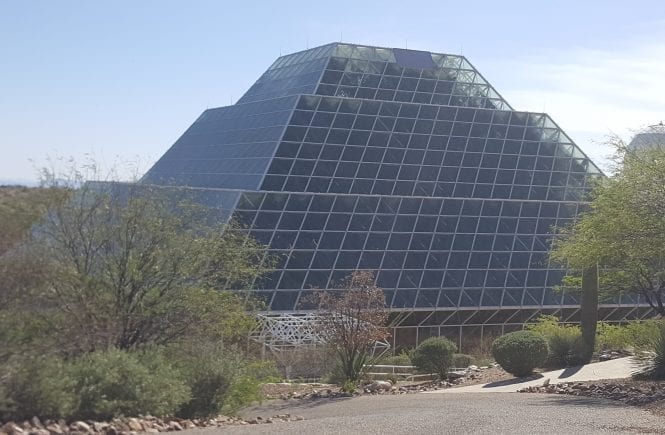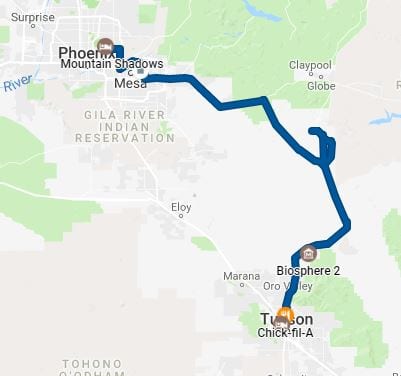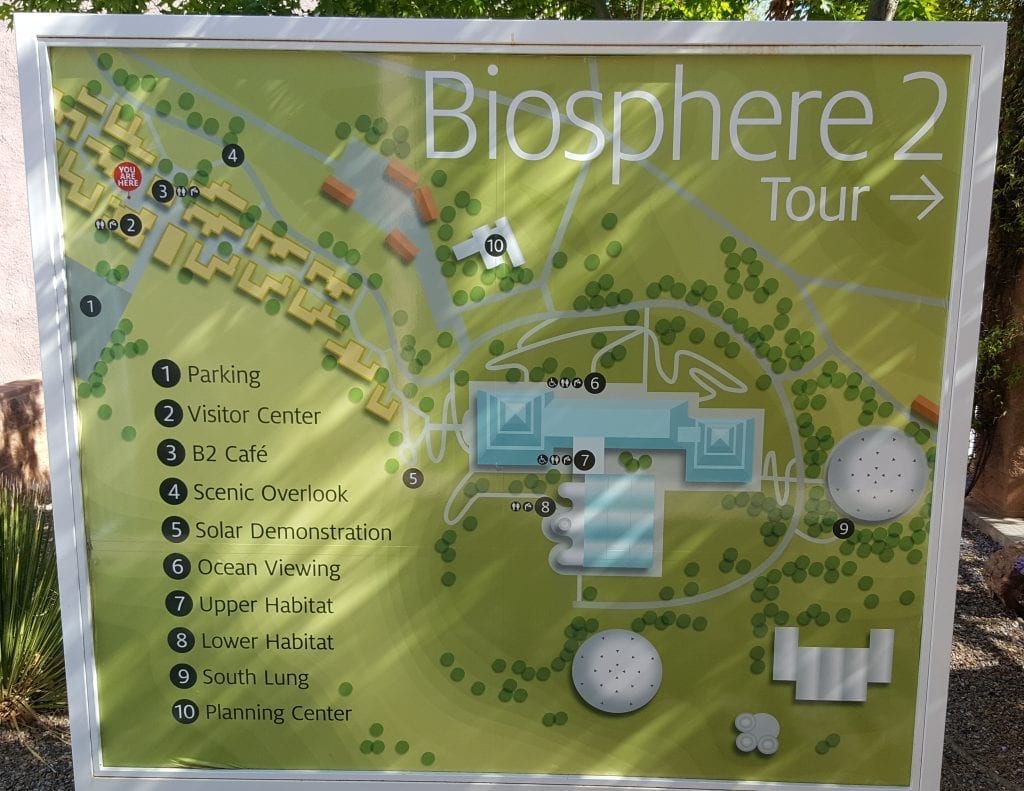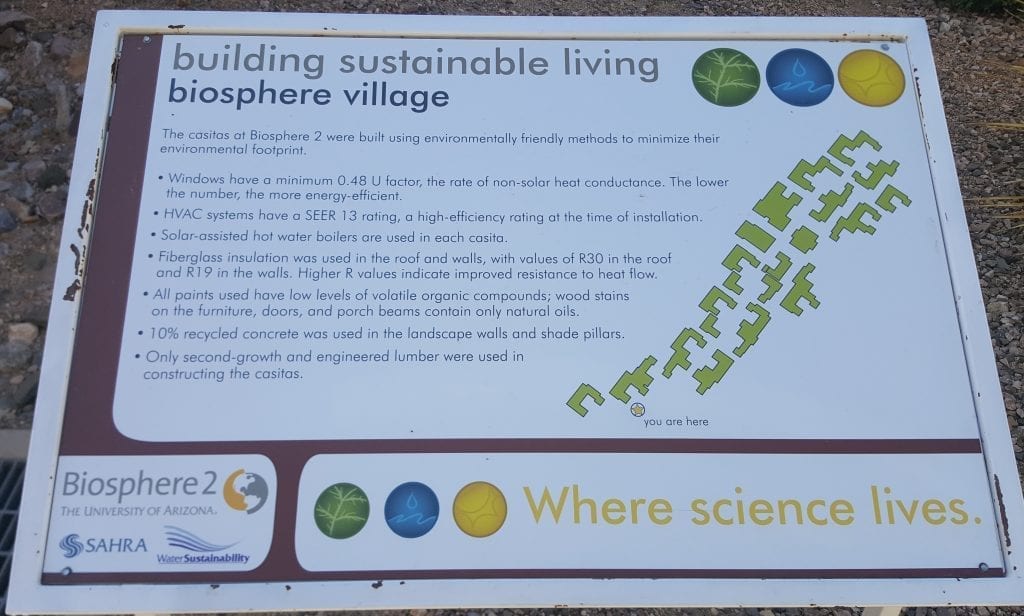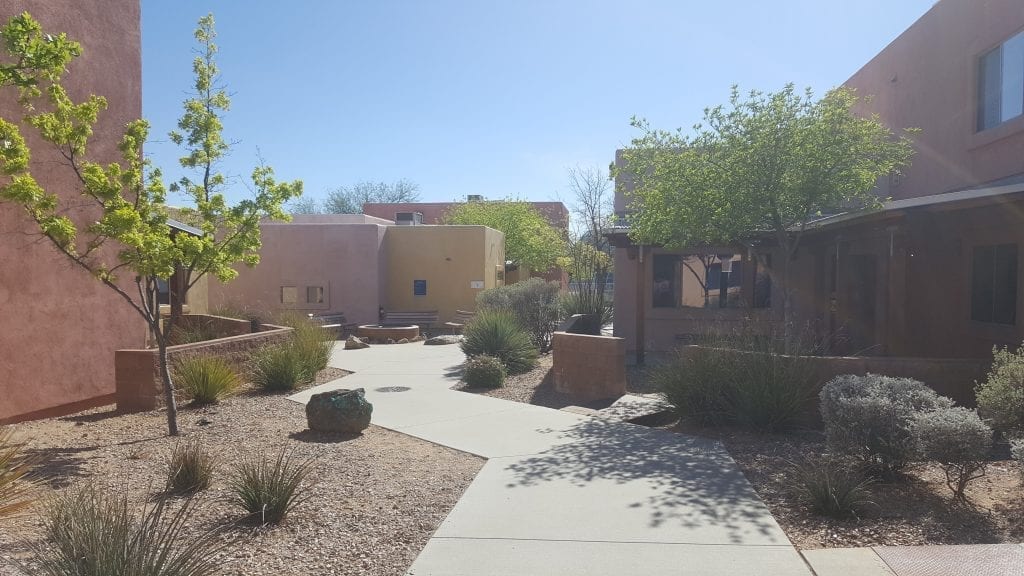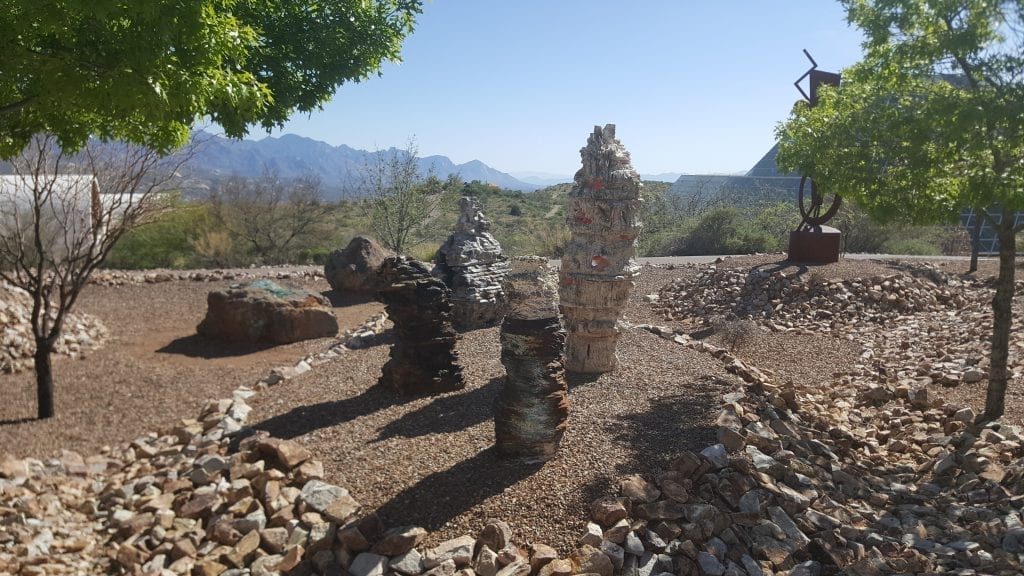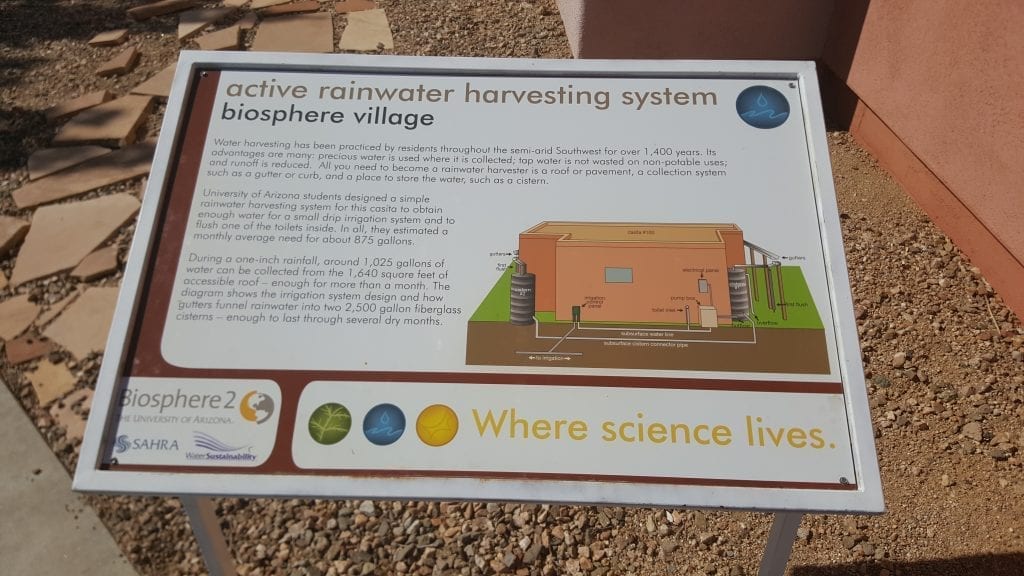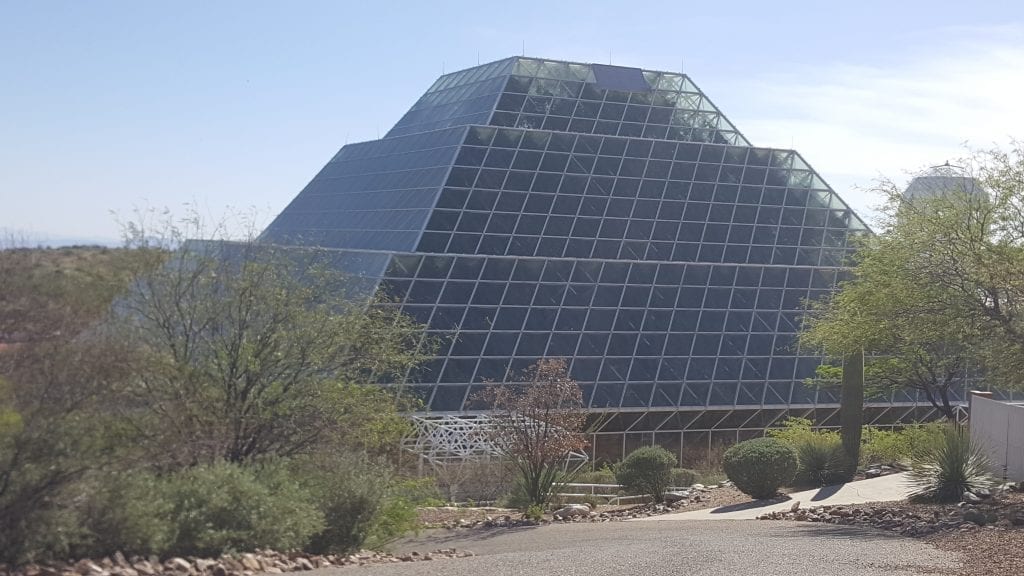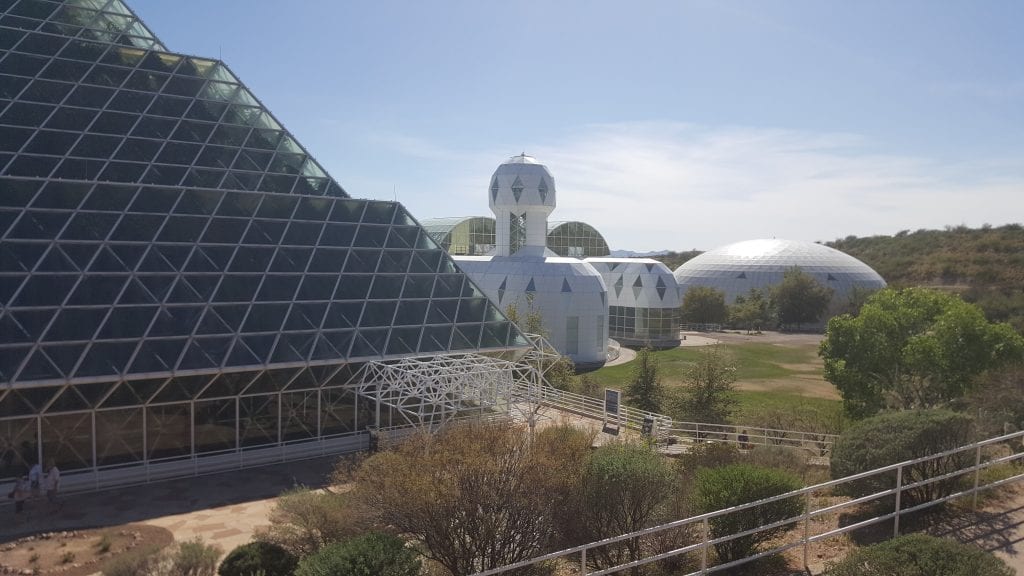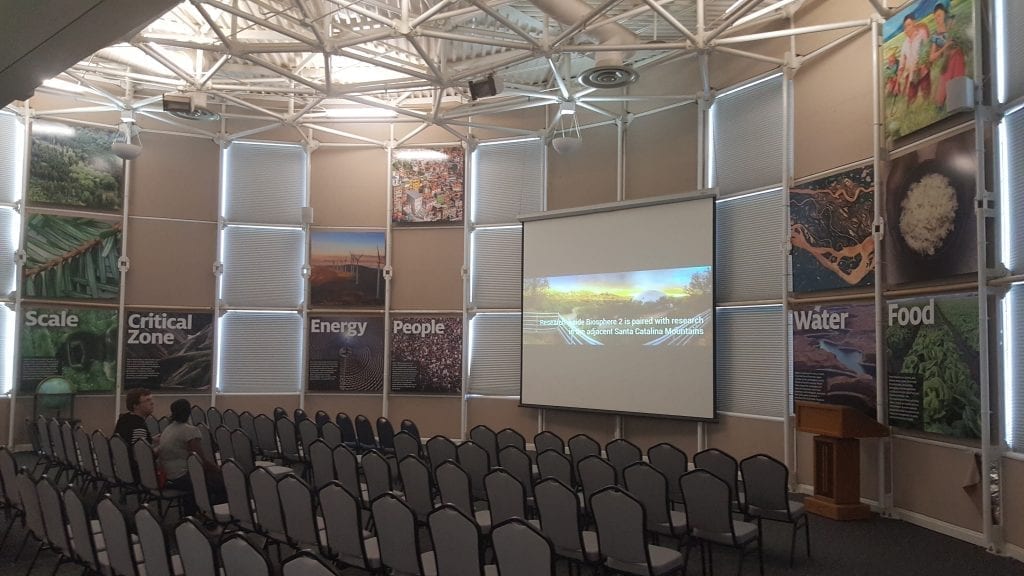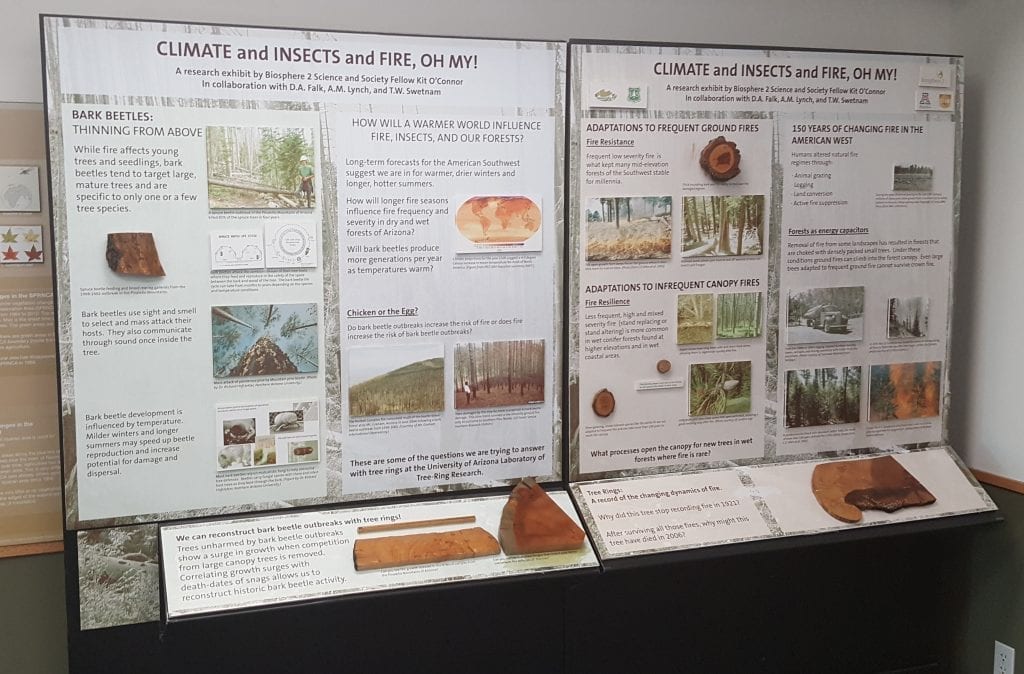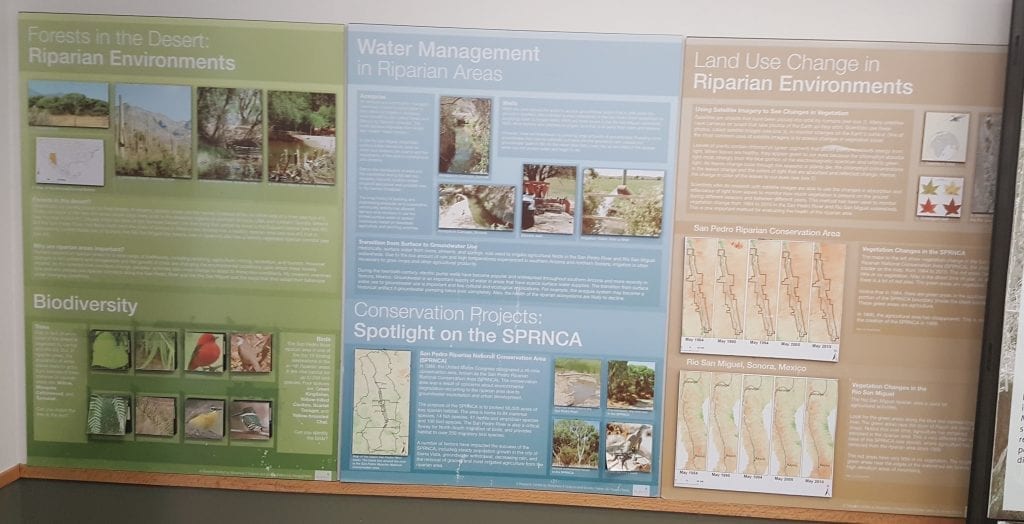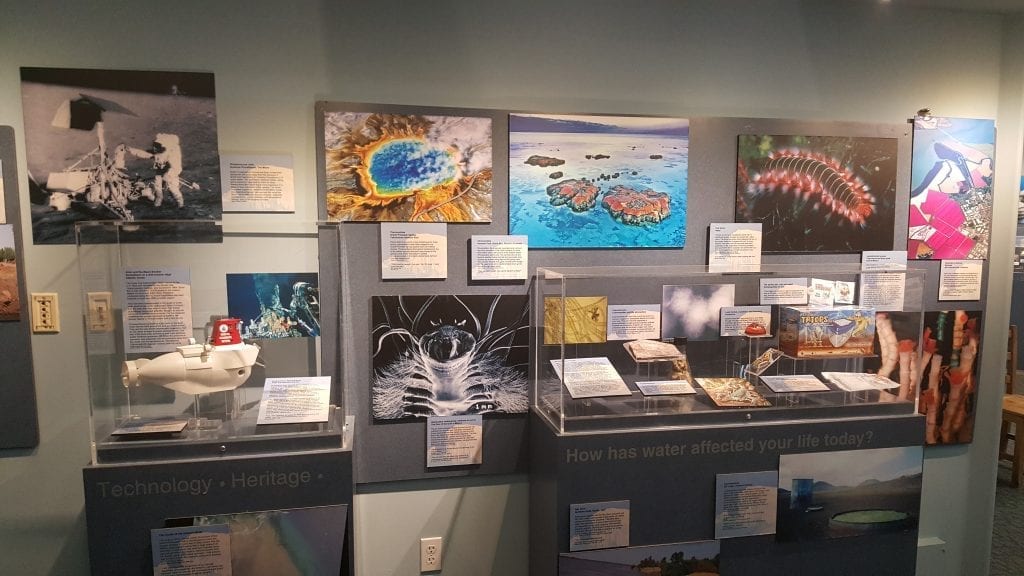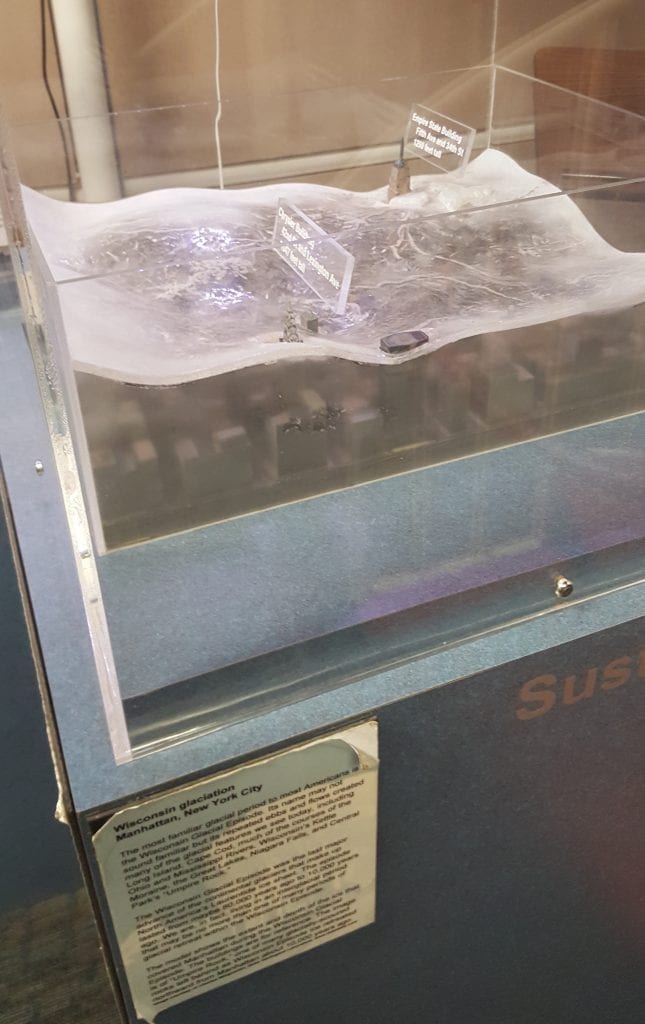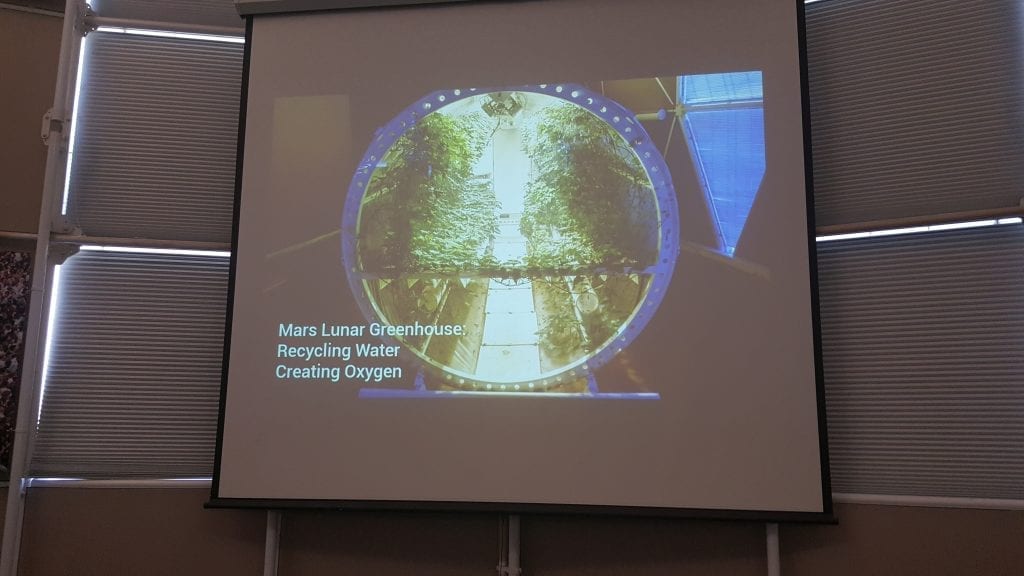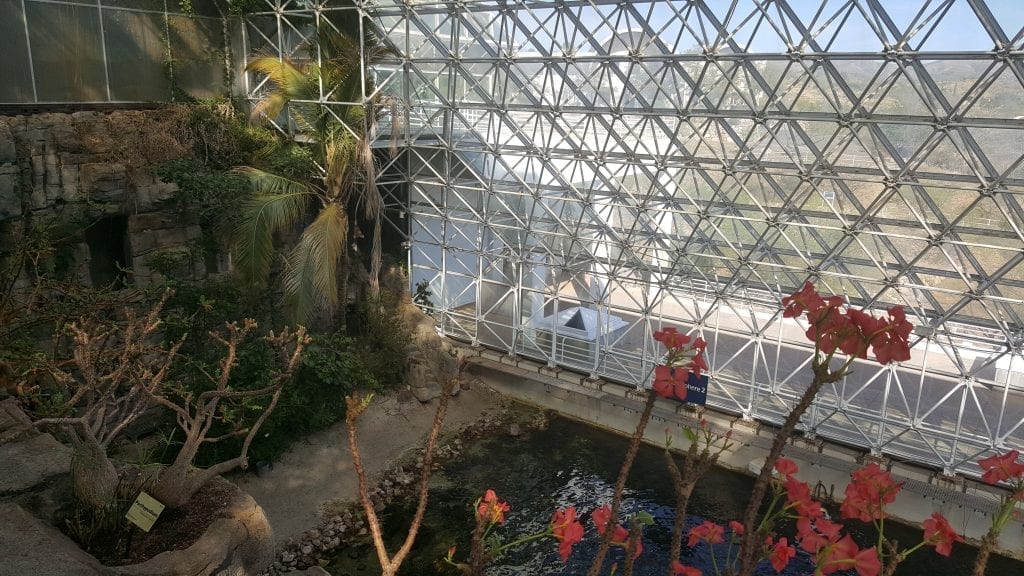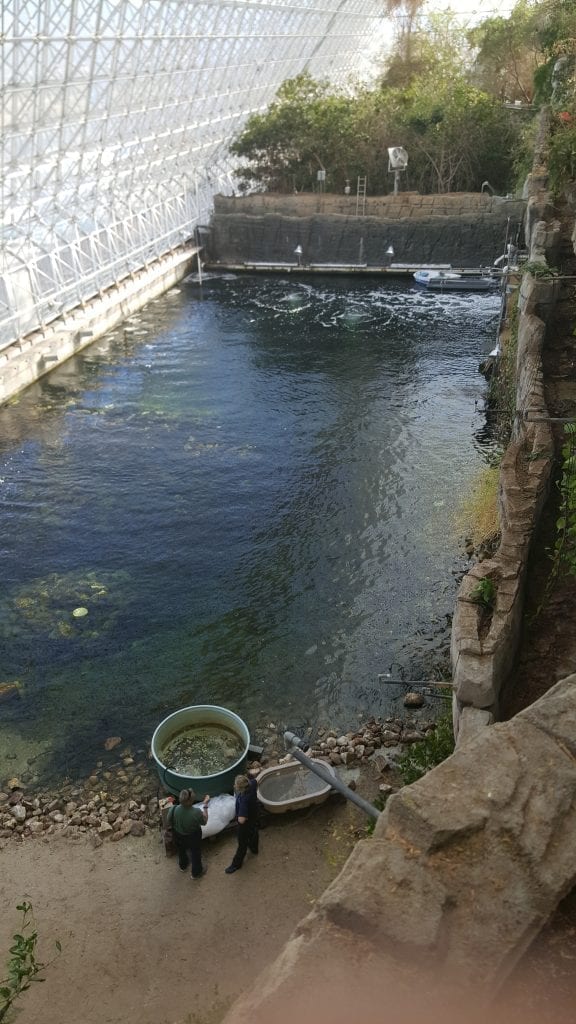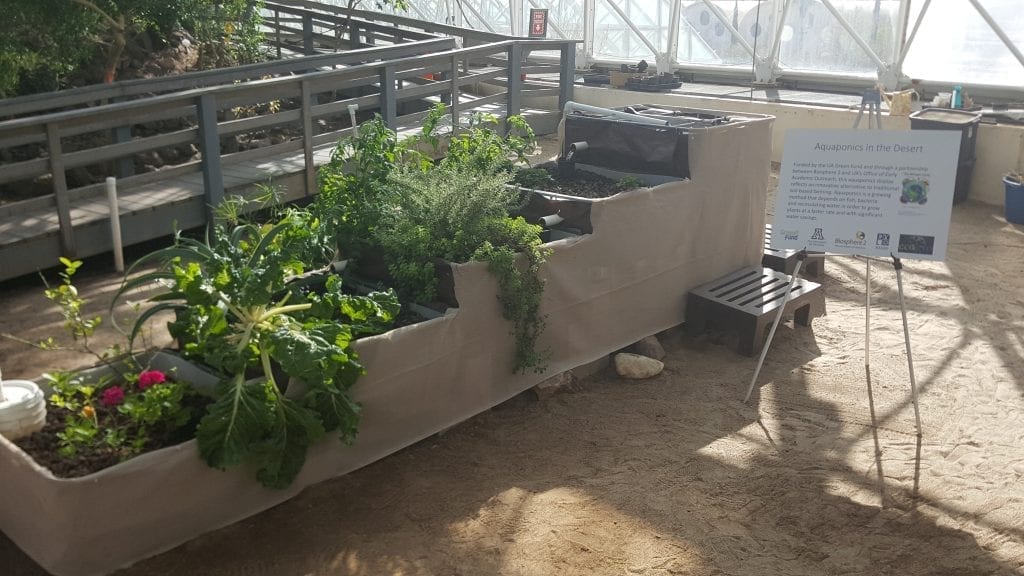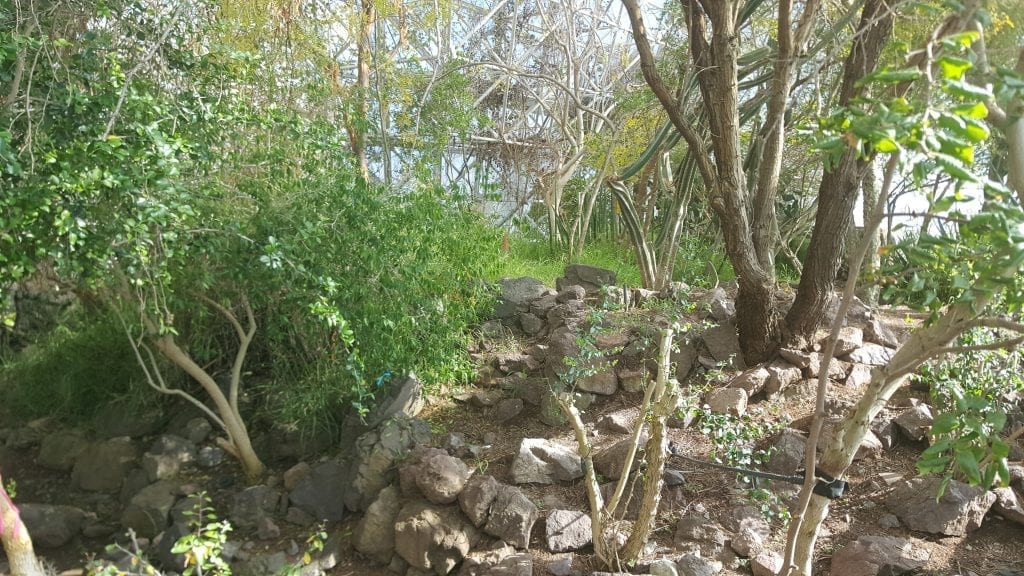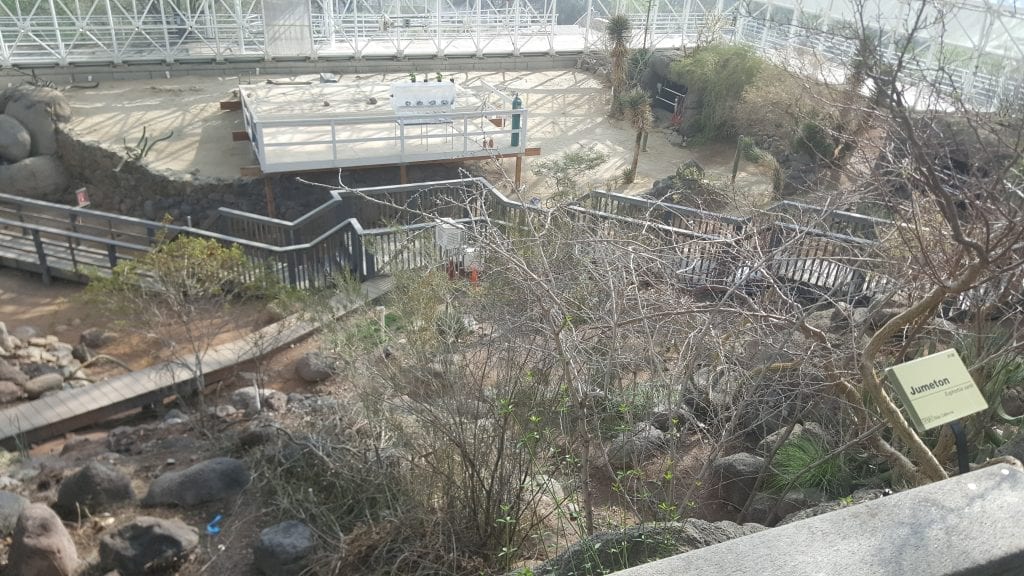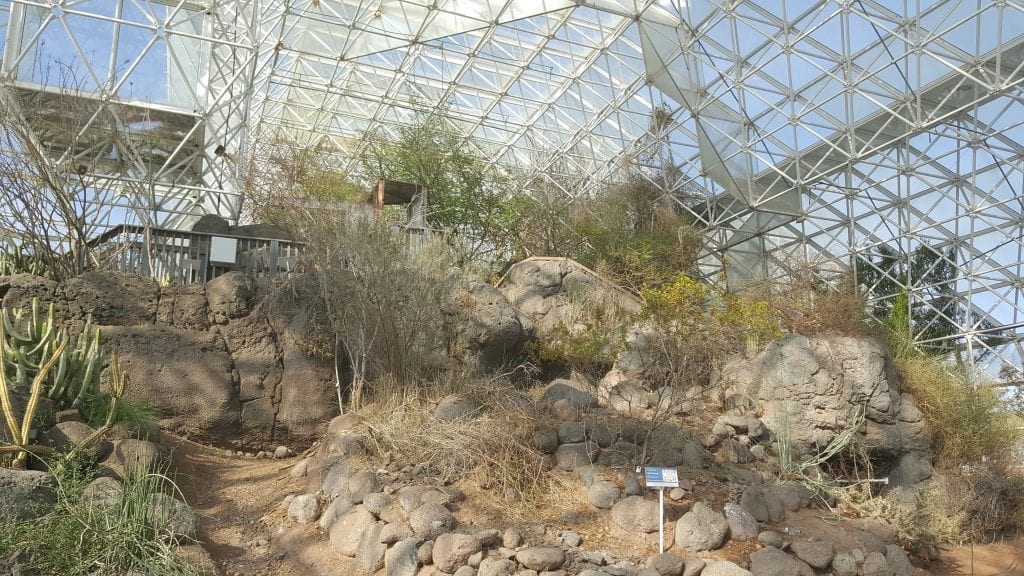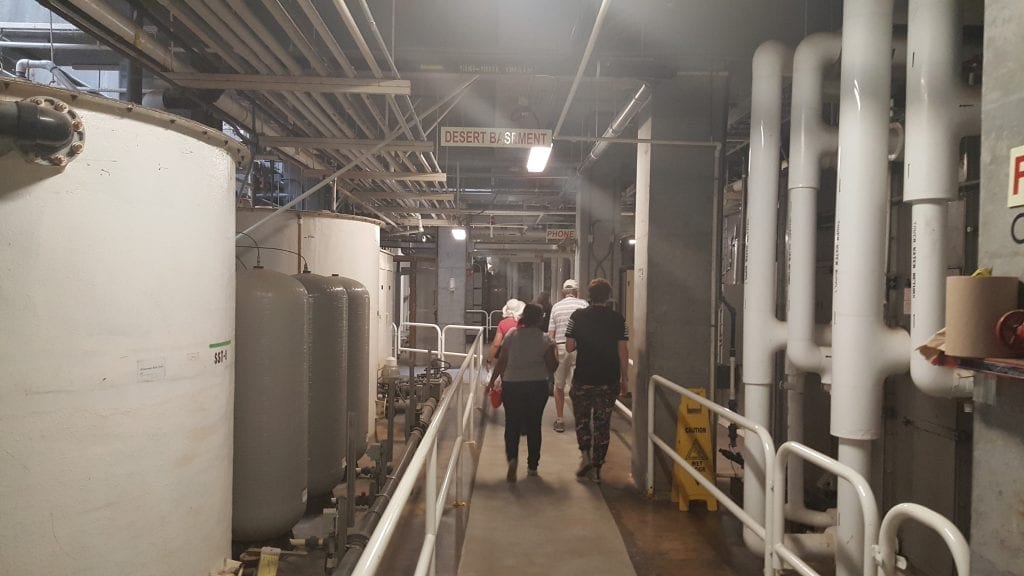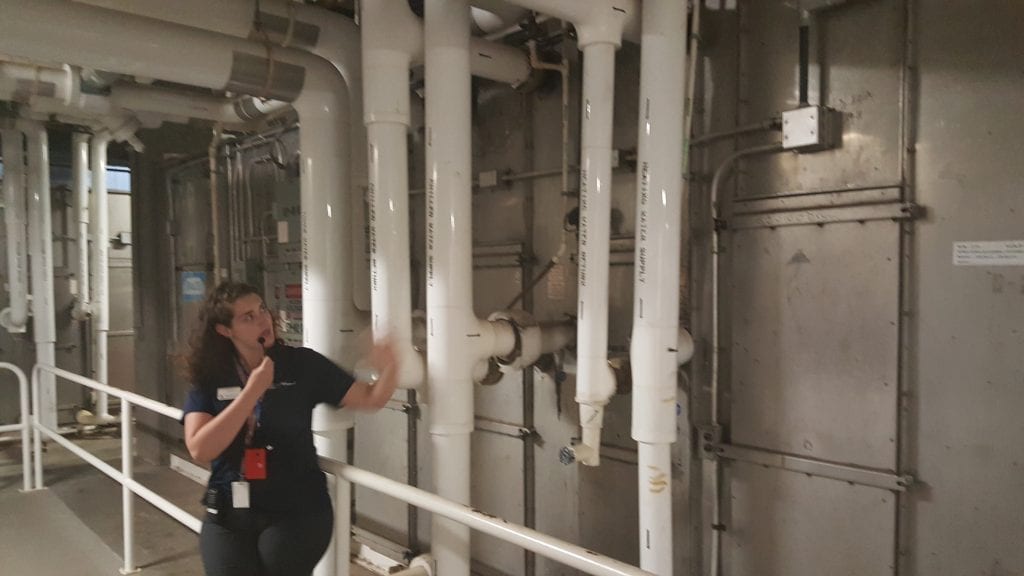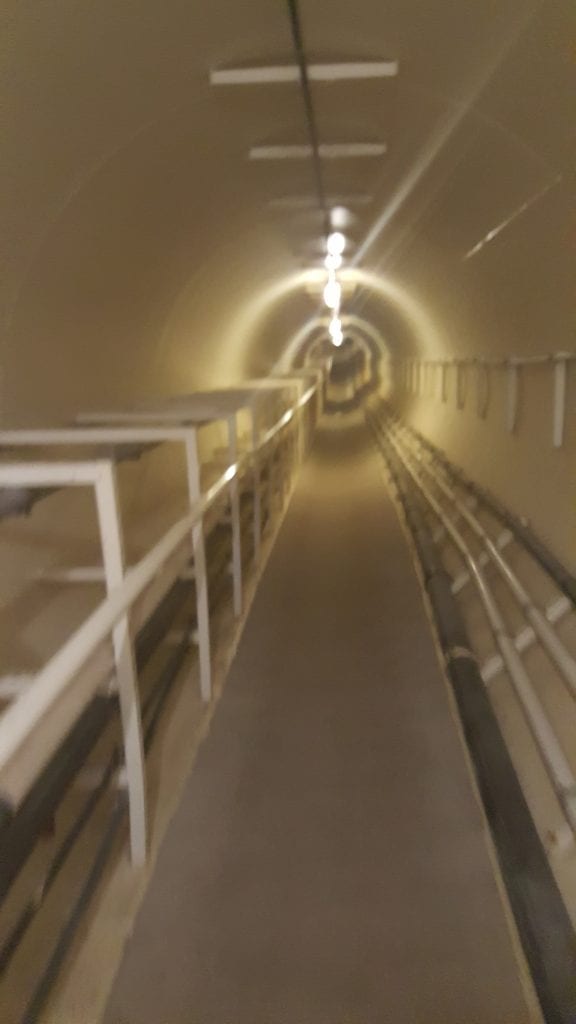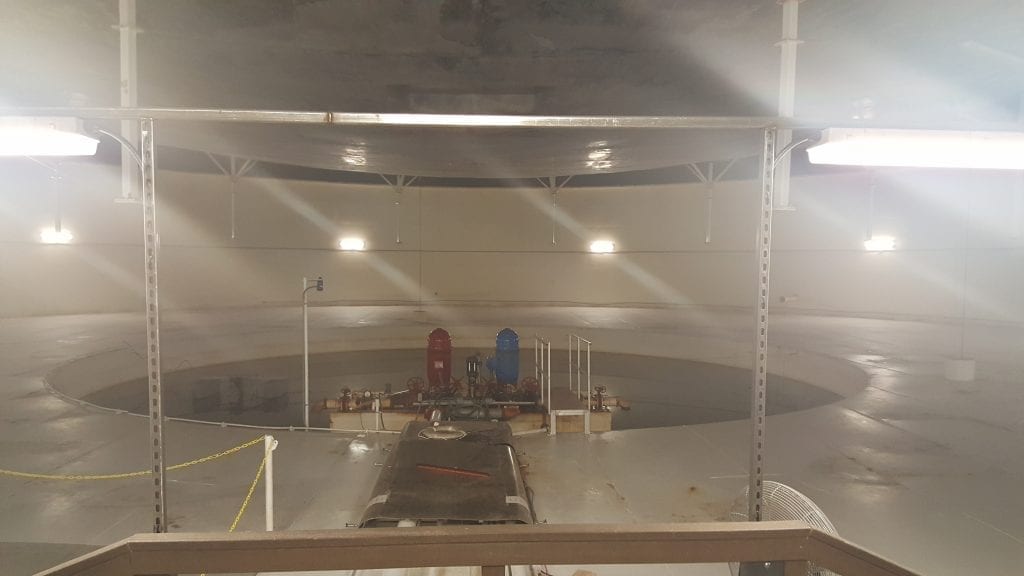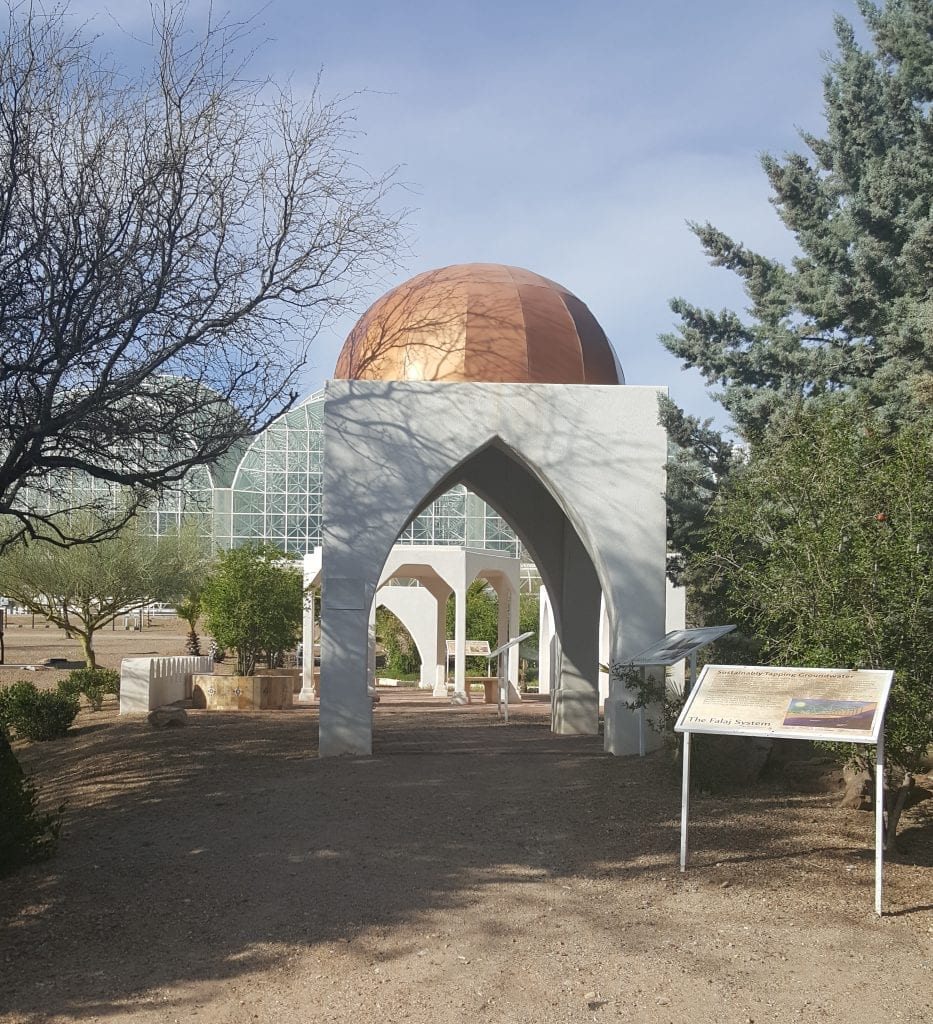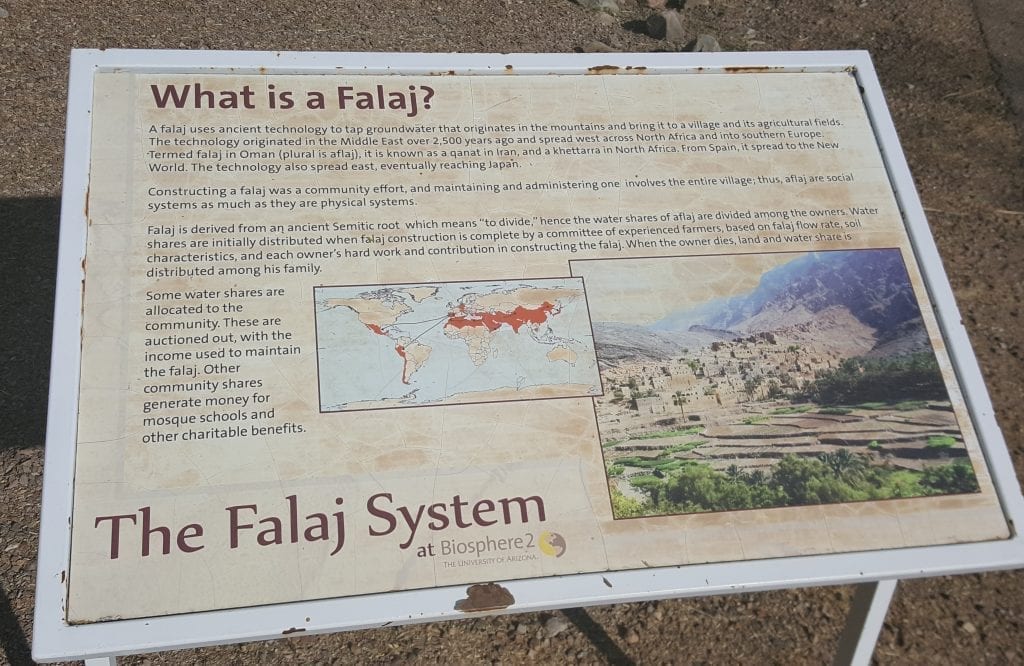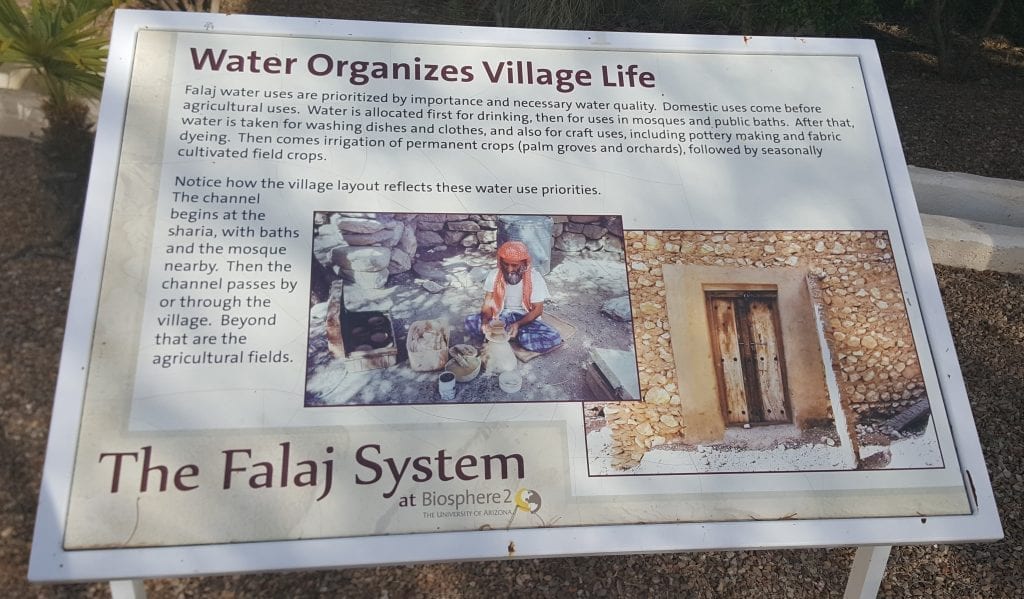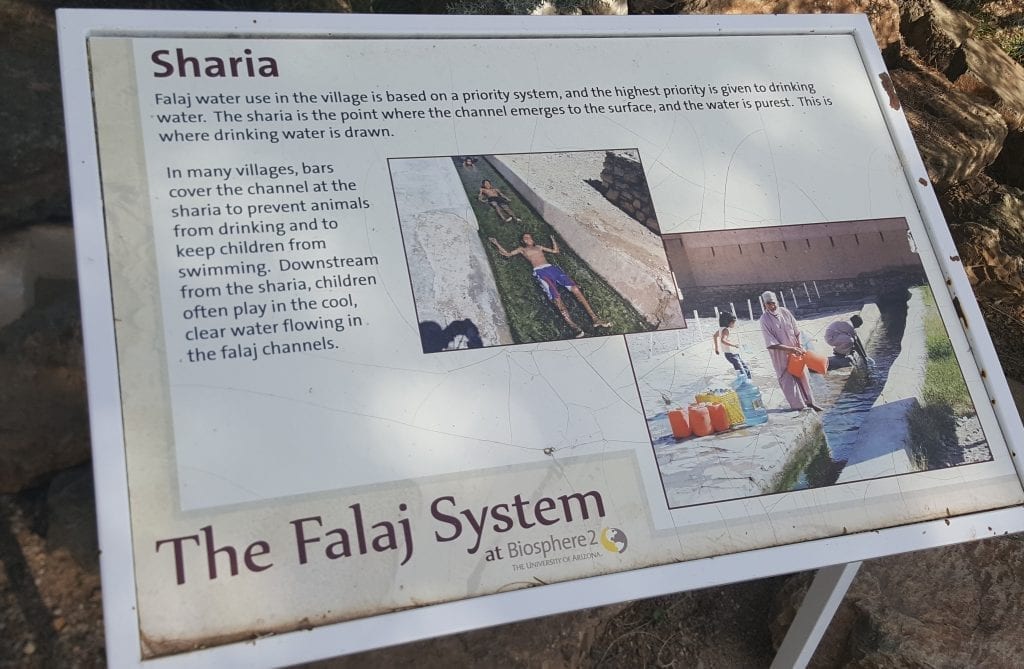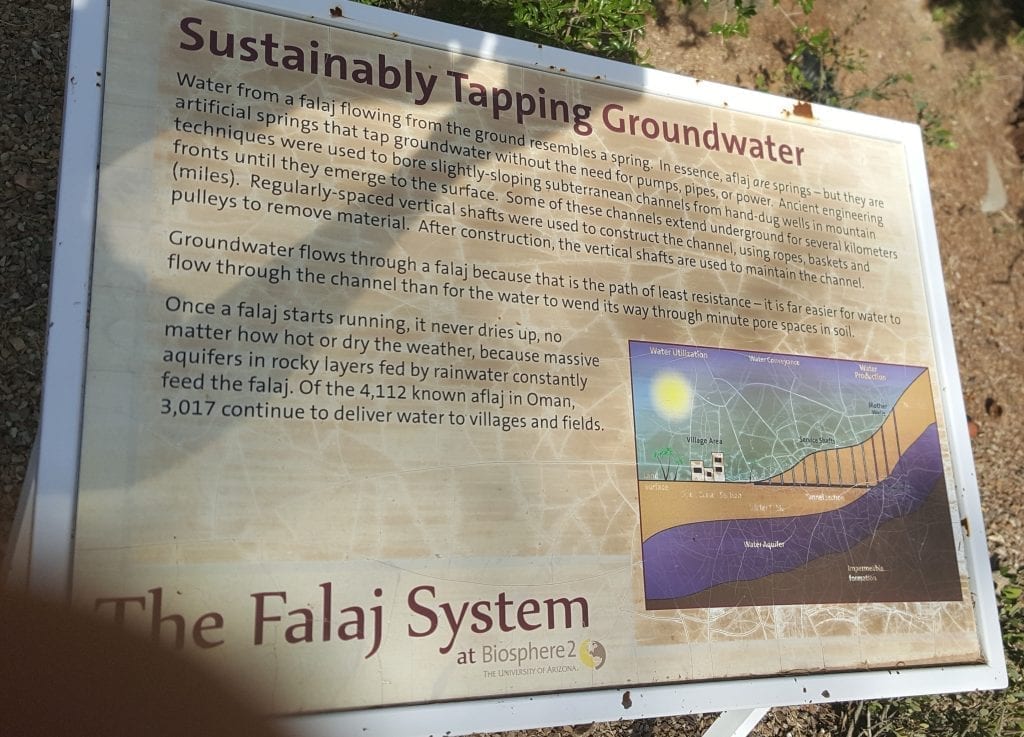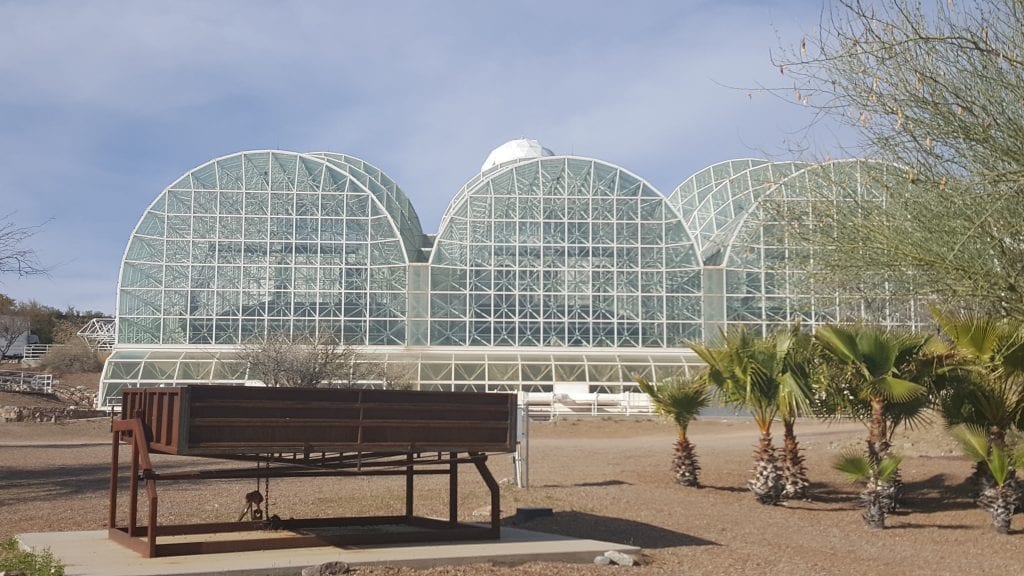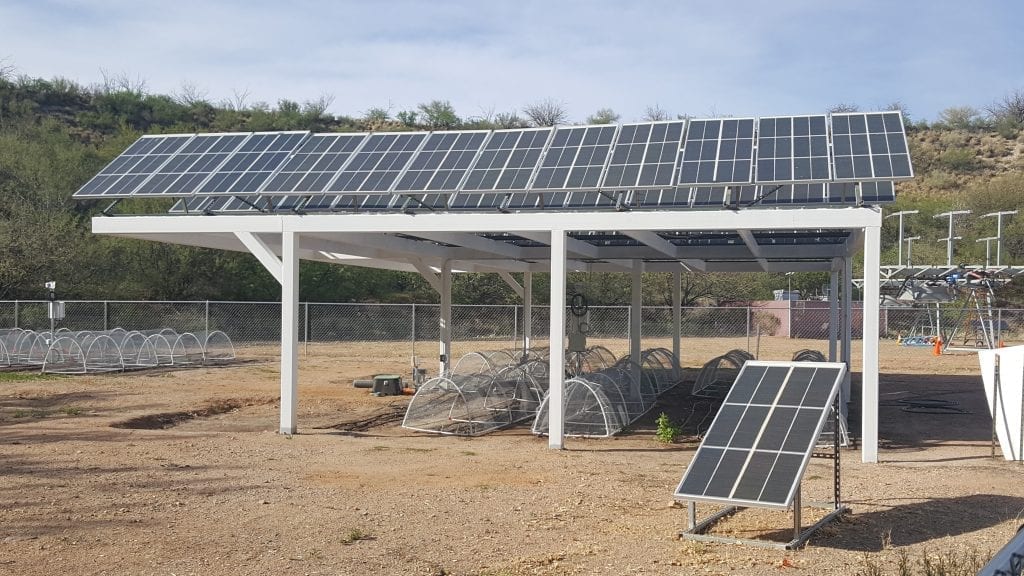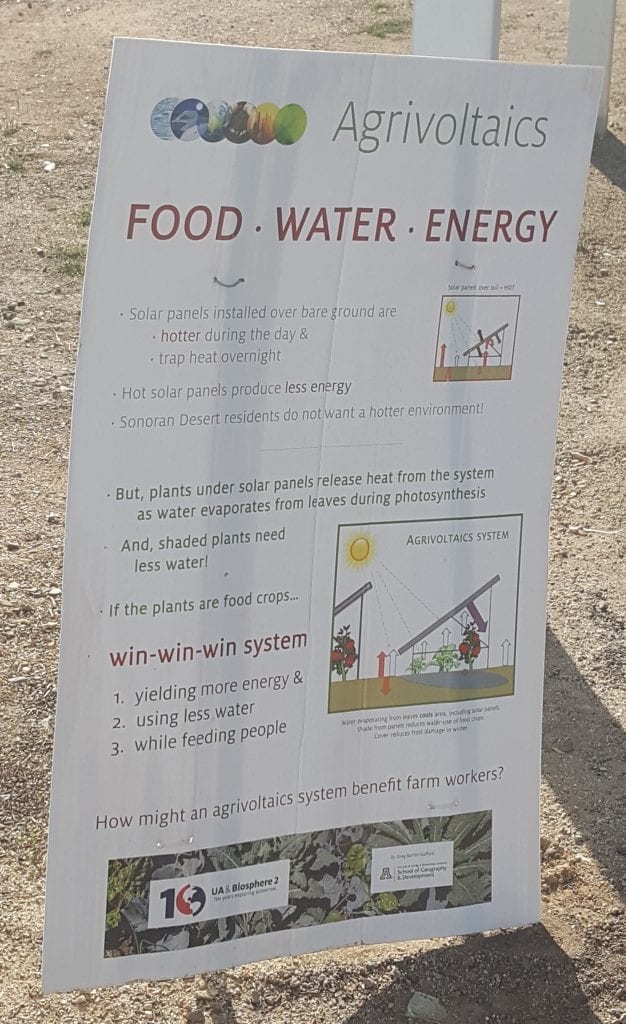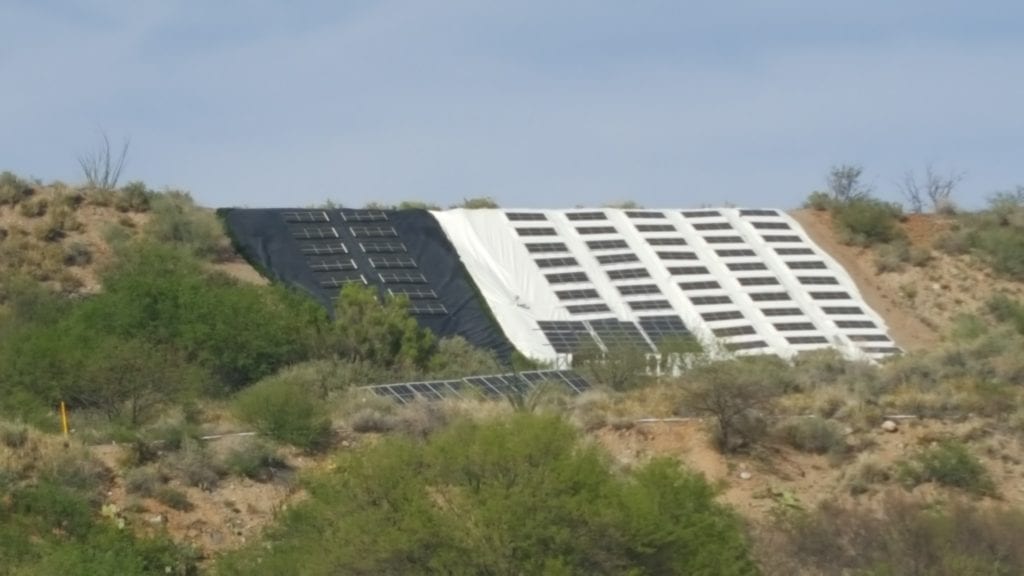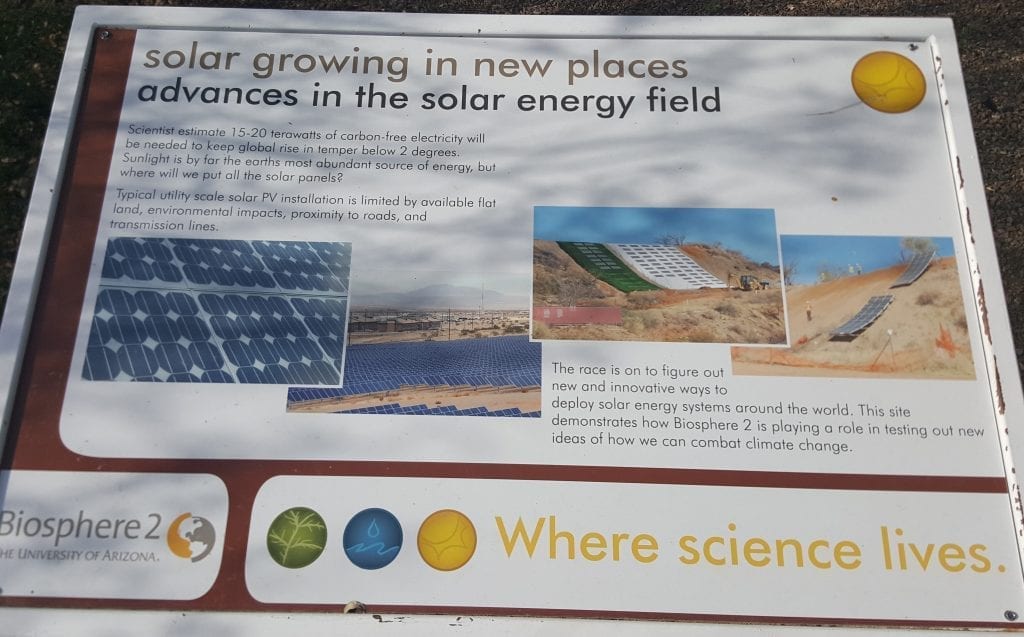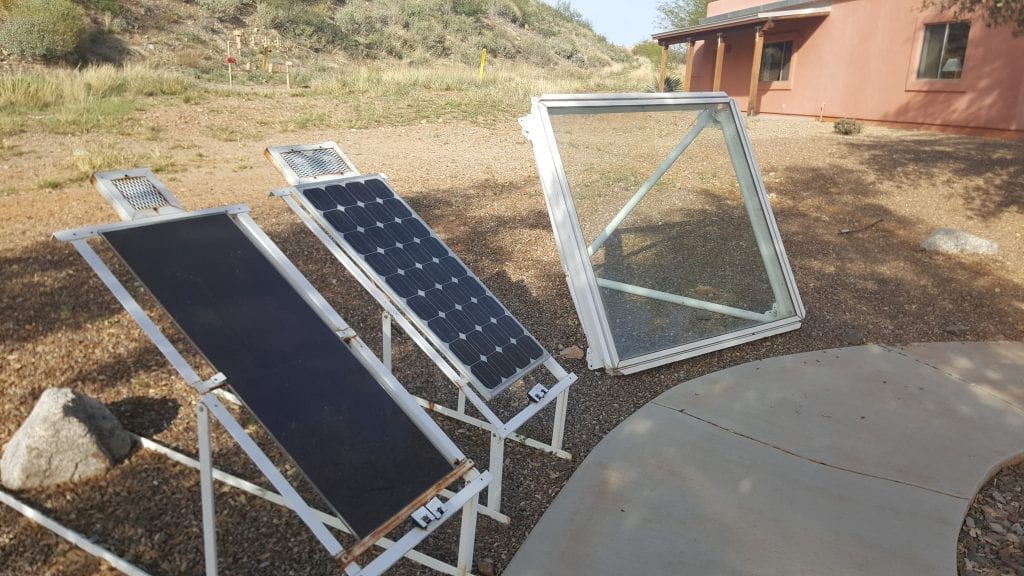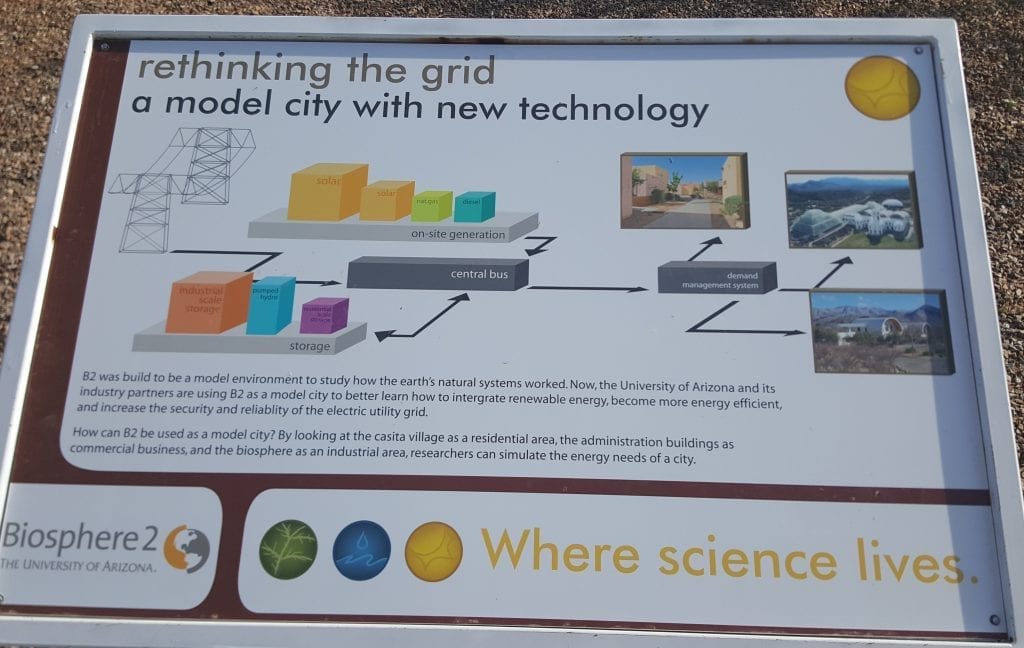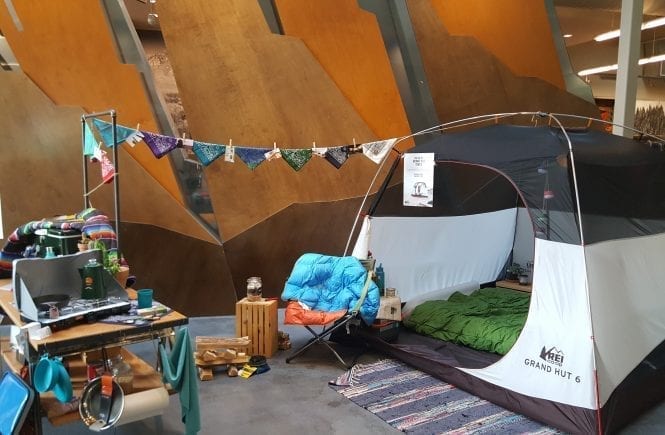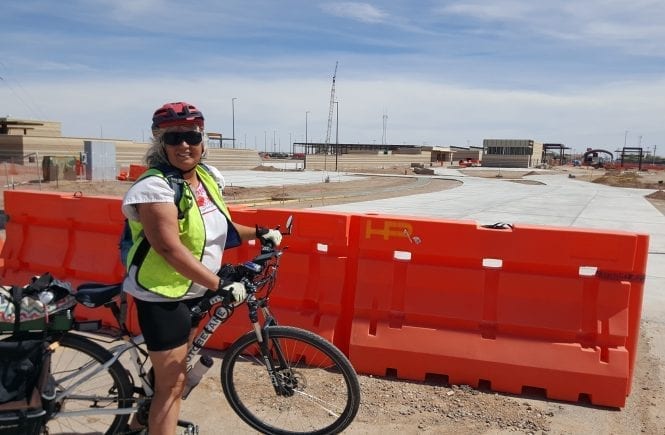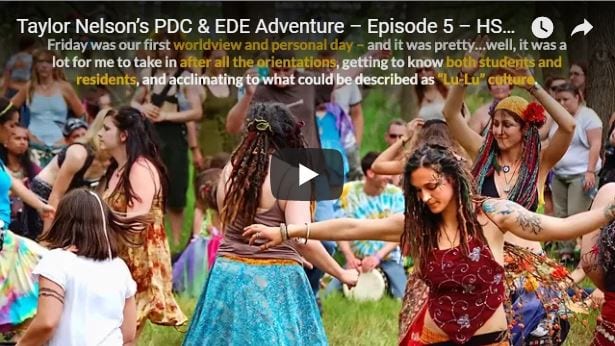Biosphere 2 – Summary:
- Who: N/A
- What: Toured the University of Arizona’s Biosphere 2 research complex
- When: Thursday, April 5
- Where: Oracle, AZ
Quick Resources:
- Biosphere 2 Webpage
- Biosphere 2 Facebook Page
- Biosphere 2’s Mars Colony Experiment – Business Insider Article
My Route:
Planning my Eco-Inspired Road Trip Blog Post
My Travel Story:
Rushing over from the Wind Spirit Community in Winkelman, I barely made it to the last group tour at the University of Arizona’s Biosphere 2, the world’s largest enclosed earth system science research facility, in Oracle, AZ.
The tour began in the ‘actual Biosphere’ (Earth) so I had to walk through the on-site housing facility, known as “The Village,” which comprised of 28 furnished 3-to-5 bedroom casitas for students and faculty, and incorporates sustainable practices like rainwater harvesting and solar energy.
This display at the entrance of the “biosphere village” highlights some of the sustainable initiatives within the community – like building materials, energy efficiency and furnishings.
A view down the central corridor of the casita village, where students, faculty and employees live seasonally. They also serve as housing for large conferences and events.
In addition to metal sculptures, there were also natural rock sculptures in artistic formations throughout the village.
This display explains the schematics of the ‘active rainwater harvesting system’ in the biosphere village.
After navigating the biosphere village, I came to the end of the path and saw the main glass dome of the Biosphere2 research facility!
I made my way down the path to the center white structure to the start of the tour in the presentation room.
We started the tour with an overview video in the presentation room, which also featured scientific displays from deep sea exploration to glacial melting models.
This exhibits highlights research on the impact of climate change, insect infestation and fire damage on forests across the world.
These displays highlight different aspects of riparian environments, like forests in the deserts, water management and changing land use impacts.
On another wall were some exploration exhibits, from outer space to deep-sea exploration!
This model shows the effects of glacial melting relative to the height of the Chrysler and Empire State Buildings!
This is where I first learned about the facility being used for a Mars Lunar Astronaut exploration program, where 8 scientists where sealed in for 2 years and had to operate the institution and produce their own food.
The first stop was the walkway above the simulated ocean, where oxygen and waves could be manipulated to see the effects on the marine life.
A view of the ocean simulation reef ecosystem, which can manipulate the oxygen levels and make artificial waves!
We proceeded into the jungle canopy and learned about the drought and carbon dioxide saturation experiments, and the small nocturnal monkeys that were introduced with the space program experiment. (They kept the scientists up late at night.)
The next exhibit was the aquaponics system, which borders the Mangrove forest ecosystem that was symbiotically connected to the ocean ecosystem.
Here’s a view of the mangrove ecosystems before we transitioned to the desert climate ecosystem.
The final above ground stop was the desert ecosystem, where moisture via fog would be pumped in and erosion and plant impact were measured.
Then we went underground to the mechanical facilities and saw the interworking’s of the piping systems, and made our way the “the lung,” a temperature compression chamber that regulated the facility via air pressure.
Our guide pointed out these pipes which pump water directly to various places in the building, from fog in the desert to rain in the jungle to the ocean system.
After the piping discussion, we headed down this long narrow tunnel to “the lung!”
In the center of this giant room is a simulated lung the contracts and expands according to pressure changes. Otherwise, the glass building would shatter and implode without a system for regulation.
We exited the biosphere and walked over to the outdoor photovoltaic systems exhibits and to look at the soil hydrology experimentation buildings from the outside.
On the way over to the PV systems, there was a Falaj system outdoor exhibit, which was a technology that tapped into groundwater – a Middle Eastern term that is comparable to roman aqueducts.
The soil hydrology experimentation buildings, aka LEO – the Landscape Evolution Observatory – which uses sensory-filled, large-scale plats to measure the movement of water through soil.
The last experimental exhibit was Agrivoltaics, which focused on food, water and energy by putting solar panels above plants.
On my way out of the Biosphere 2 complex, I swung by the photovoltaic panels and displays on the hillside before I returned back to my car for the drive to Tuscon.
At the top of the hill were samples of various solar panels as well as a large energy efficienct window pane.
This display conceptualizes the entire facility as a model city in terms of energy use, with the village as the residential area, the administration buildings as the commercial business center, and the biosphere as the industrial center.

